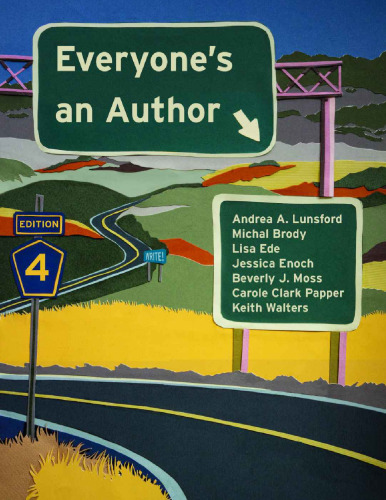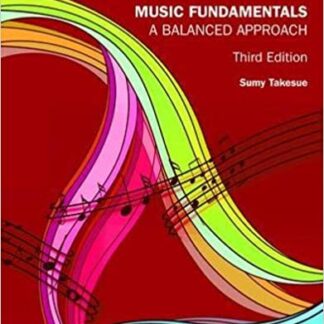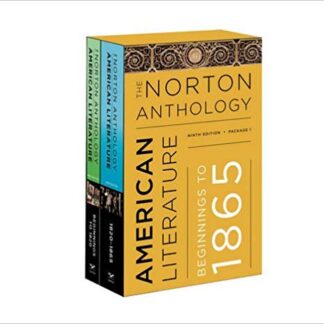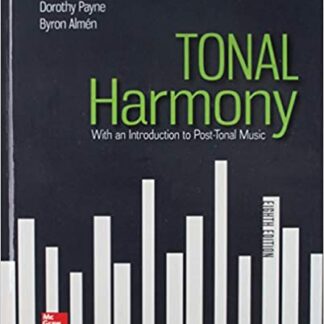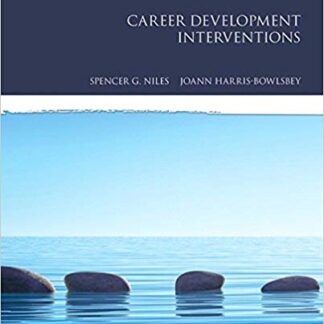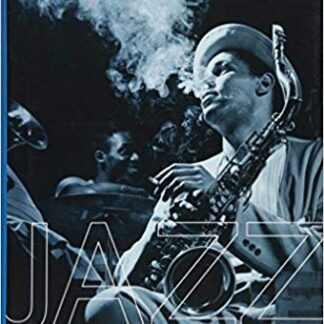Description
Everyone’s an Author 4th Edition by Andrea Lunsford, ISBN-13: 978-1324045106
[PDF eBook eTextbook] – Available Instantly
- Publisher: W. W. Norton & Company; Fourth edition (July 1, 2023)
- Language: English
- ISBN-10: 1324045108
- ISBN-13: 978-1324045106
The “can-do” writing guide that helps students harness the power of rhetoric.
Table of Contents:
Cover
Publisher’s Notice
Half-title Page
Title Page
Copyright
Dedication
A Note about the Cover
Index of Common Writing Assignments
Brief Contents
InQuizitive for Writers
Preface
Contents
Introduction: Is Everyone an Author?
Part I: The Need for Rhetoric and Writing
Chapter One: Thinking Rhetorically
Chapter Two: Engaging Productively with Others
Chapter Three: Rhetorical Situations
Chapter Four: Language, Power, and Rhetoric
Chapter Five: “It’s Like Learning a New Language” / Understanding College Expectations
Characteristic Features
Part II: Reading Processes
Chapter Six: Reading Rhetorically
Thinking about Your Rhetorical Situation
Becoming an Active, Engaged Reader
Fast—and Slow—Reading
Reading Unfamiliar or Difficult Texts
Reading On-Screen and Off
Reading Across Genres
Reading Across Academic Disciplines
Chapter Seven: Annotating, Summarizing, Responding
Annotating
A Sample Annotated Text
Summarizing
Responding
Summary / Response Essays
YULIYA VAYNER, The Higher Price of Buying Local, An Annotated Example
Chapter Eight: Distinguishing Facts from Misinformation
Part III: Writing Processes
Chapter Nine: Managing the Writing Process
Writing Processes / A Roadmap
Chapter Ten: Reflecting on Your Writing
Writing a Reflection / A Roadmap
ANNAYA BAYNES, Becoming the Writer I Am: A Reflection on My First-Year Composition Class, An Annotated Example
Chapter Eleven: “Here Comes Everybody!” / The Need for Collaboration
Part IV: Genres of Writing
Chapter Twelve: Choosing Genres
Chapter Thirteen: Arguing a Position / “This Is Where I Stand”
Characteristic Features
RUSSEL HONORÉ, Work Is a Blessing, An Annotated Example
Arguing A Position / A Roadmap
NICOLE LYNN LEWIS, How Colleges Tell Student-Parents They Don’t Belong, A Model Argument
KATHERINE SPRIGGS, On Buying Local, A Model Argument
Chapter Fourteen: Writing a Narrative / “Here’s What Happened”
Characteristic Features
RAYA ELFADEL KHEIRBEK, At the VA, Healing the Doctor-Patient Relationship, An Annotated Example
Literacy Narratives
PALOMA GARCIA, First Day of School, An Annotated Example
Writing A Narrative / A Roadmap
CHARLOTTE CLYMER, They Called Me a Girl before Anyone Else Did, A Model Narrative
LARRY LEHNA, The Look, A Model Narrative
Chapter Fifteen: Writing Analytically / “Let’s Take a Closer Look”
Characteristic Features
SHAAN SACHDEV, The Key to Beyoncé’s Lasting Success, An Annotated Example
Visual Analysis
FRANKIE DE LA CRETAZ, Serena Williams’s Tennis Outfits Defy the Norms Female Athletes Face, An Annotated Example
Writing Analytically / A Roadmap
JOHNA PAOLINO, Google Home vs. Alexa: Two Simple User Experience Design Gestures That Delighted a Female User, An Annotated Example
MELISSA RUBIN, Advertisements R Us, An Annotated Example
Chapter Sixteen: Reporting Information / “Just the Facts”
Characteristic Features
WIKIPEDIA, Gender, An Annotated Example
Profiles
BILL LAITNER, Heart and Sole: Detroiter Walks 21 Miles in Work Commute, An Annotated Example
Reporting Information / A Roadmap
TATE RYAN-MOSLEY, How Digital Beauty Filters Perpetuate Colorism, A Model Report
RYAN JOY, The Right to Preach on a College Campus, A Model Report
Chapter Seventeen: Writing a Review / “Two Thumbs Up”
Characteristic Features
TIM ALAMENCIAK, Monopoly: The Scandal Behind the World’s Favorite Board Game, An Annotated Example
Writing A Review / A Roadmap
K. AUSTIN COLLINS, Respect: Aretha’s Music Carries This Biopic, A Model Review
MANISHA UMMADI, Indie Gem Please Knock on My Door Expertly Captures Mental Illness, A Model Review
Chapter Eighteen: Making a Proposal / “Here’s What I Recommend”
Characteristic Features
EMILY BURACK, The Olympics Devastate Host Cities and Need a Permanent Location, An Annotated Example
Project Proposals
DAVID PASINI, The Economic Impact of Investing Public Funds in Sport Franchises, An Annotated Example
Writing A Proposal / A Roadmap
MARY KING, Guaranteed Income Can Solve U.S. Poverty, A Model Review
JONATHAN HOLLOWAY, To Unite a Divided America, Make People Work for It, A Model Review
Part V: The Centrality of Argument
Chapter Nineteen: Those You Read, Those You Write / Analyzing and Constructing Arguments
Where’s the Argument Coming From?
What’s the Claim?
What’s at Stake?
Means of Persuasion: Emotional, Ethical, and Logical Appeals
What About Other Perspectives?
Ways of Structuring Arguments
Matters of Style
Chapter Twenty: Strategies for Supporting an Argument
Part VI: Research
Chapter Twenty-One: Joining the Conversation / Starting Your Research
Chapter Twenty-Two: Online and at the Library / Finding Sources
What Kind of Sources Do You Need?
Types of Sources—and Where to Find Them
Research Sites: On the Internet, in the Library
Running Searches, Narrowing Results
Chapter Twenty-Three: Conducting Research in the Field
Chapter Twenty-Four: Keeping Track / Managing Information Overload
Chapter Twenty-Five: Evaluating Sources
Chapter Twenty-Six: Annotating a Bibliography
A Descriptive Annotated Bibliography
An Evaluative Annotated Bibliography
Chapter Twenty-Seven: Moving from What Your Sources Say to What You Say
Literature Reviews
Literature Review / An Annotated Example
Chapter Twenty-Eight: Quoting, Paraphrasing, Summarizing
Chapter Twenty-Nine: Giving Credit, Avoiding Plagiarism
Chapter Thirty: MLA Style
In-Text Documentation
Notes
List of Works Cited
Formatting a Research Essay
Sample Research Essay
Chapter Thirty-One: APA Style
In-Text Documentation
Notes
Reference List
Formatting a Research Essay
Sample Research Essay
Part VII: Style
Chapter Thirty-Two: What’s Your Style?
Chapter Thirty-Three: Mixing Languages and Dialects
Chapter Thirty-Four: How to Craft Powerful Sentences
Four Common Sentence Patterns
Ways of Emphasizing the Main Idea in a Sentence
Opening Sentences
Closing Sentences
Varying Your Sentences
Chapter Thirty-Five: Polishing and Editing Your Writing
Editing Sentences
Editing Pronouns
Editing Verbs
Editing Quotations
Editing Commas
Editing Words That Are Often Confused
Part VIII: Design and Delivery
Chapter Thirty-Six: Designing What You Write
Thinking Rhetorically About Design
Choosing Typefaces and Fonts
Adding Headings
Using Color
Using Visuals
Putting It All Together
Getting Responses to Your Design
Chapter Thirty-Seven: Composing and Remixing Across Media
Kinds of Multimodal Projects
Remix Projects
Managing Multimodal and Remix Projects
Chapter Thirty-Eight: Making Presentations
Across Disciplines
A Sample Presentation
Making A Presentation / A Roadmap
Chapter Thirty-Nine: Writing For a Public Audience
Bonus Chapter A: Writing and Rhetoric in the Workplace
Consider Your Rhetorical Situation
Be Professional
Job Search Letters
A Cover Letter
Résumés
A Résumé
References
Writing Samples
Job Interviews
Writing on the Job
Bonus Chapter B: Assembling a Portfolio
What to Include in a Writing Portfolio
Collecting Your Work
Reflecting on Your Writing
A Sample Portfolio Statement
Organizing a Portfolio
Bonus Chapter C: Publishing Your Writing
Credits
About the Authors
About the Alphabet
The Norton Writer’s Prize
Author / Title Index
Glossary / Index
MLA Documentation Directory
APA Documentation Directory
Andrea Lunsford is Emerita Professor of English at Stanford University and is on the faculty at the Bread Loaf School of English. Her scholarly interests include contemporary rhetorical theory, women and the history of rhetoric, collaboration, style, and technologies of writing. She’s received the Braddock and Shaughnessy Awards, and in 1994 she received the CCCC Exemplar Award. She is currently at work on The Norton Anthology of Rhetoric and Writing.
Michal Brody is a linguist, independent scholar, and lecturer. She was a founding faculty member of the Universidad de Oriente in Yucatán, Mexico. She has taught language-related courses in the Departments of English, Communication Studies, and MATESOL at San Francisco State University and Sonoma State University. Her scholarly work centers on language pedagogy and politics in the United States and Mexico. She’s the author (with Keith Walters) of What’s Language Got to Do with It? and coauthor (with Richard Bullock and Francine Weinberg) of The Little Seagull Handbook, and has been a contributor to LetsTalkLibrary, Everyone’s an Author Tumblr site and They Say / I Blog.
Lisa Ede is Emerita Professor of English at Oregon State University, where she directed the Center for Writing and Learning and taught courses in composition, rhetoric, and literacy studies. She’s received the Braddock and Shaughnessy Awards for her research on audience and classical rhetoric. Her recent books include Situating Composition: Composition Studies and the Politics of Location and (with Andrea Lunsford) Writing Together: Essays on Collaboration in Theory and Practice.
Beverly Moss is Associate Professor of English at The Ohio State University, where she teaches in the Rhetoric, Composition, and Literacy program, and is on the faculty at the Bread Loaf School of English. Her research and teaching interests focus on community literacy, composition theory and pedagogy, and writing center theories and practices. Her books include Literacy across Communities and A Community Text Arises: A Literate Text and a Literacy Tradition in African American Churches.
Carole Clark Papper recently retired from the Department of Writing Studies and Composition at Hofstra University, where she directed the University Writing Center. Previously, she served for many years as the Director of the Ball State University Writing Program (winner of the CCCC Certificate of Excellence for 2006-2007). Her scholarly interests include visual literacy, composition theory and pedagogy, and writing center theories and practices.
What makes us different?
• Instant Download
• Always Competitive Pricing
• 100% Privacy
• FREE Sample Available
• 24-7 LIVE Customer Support

